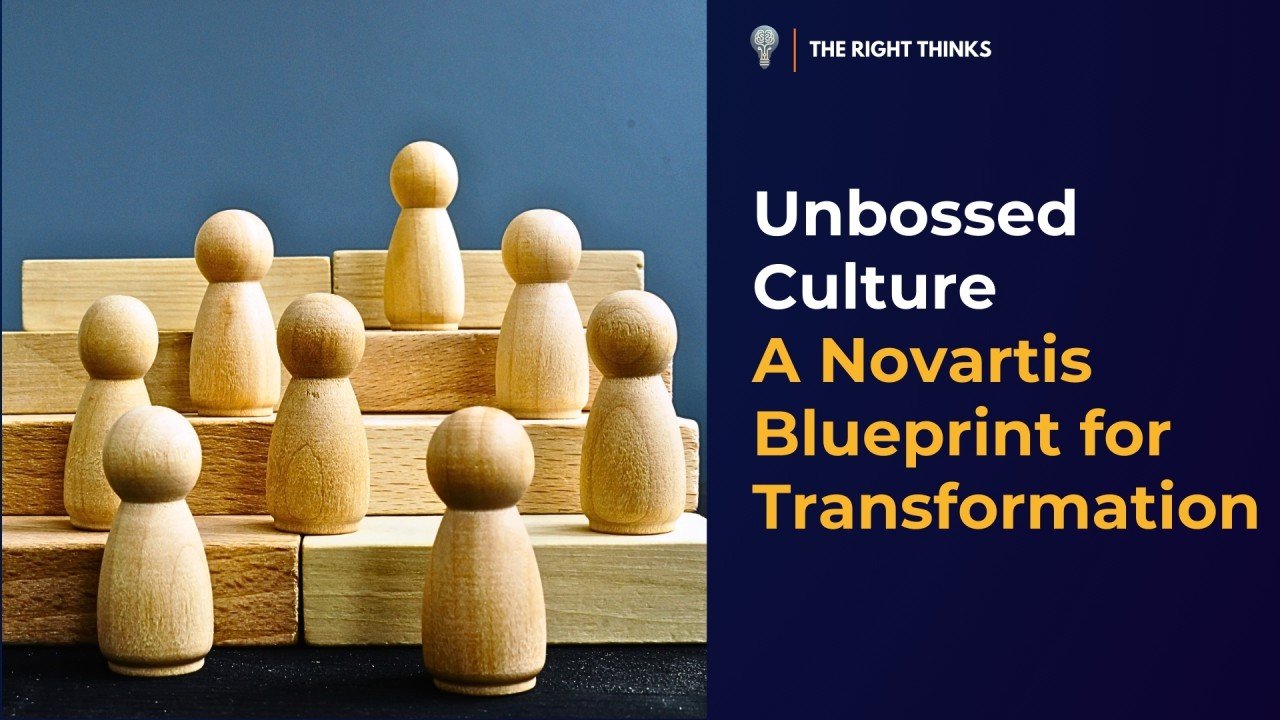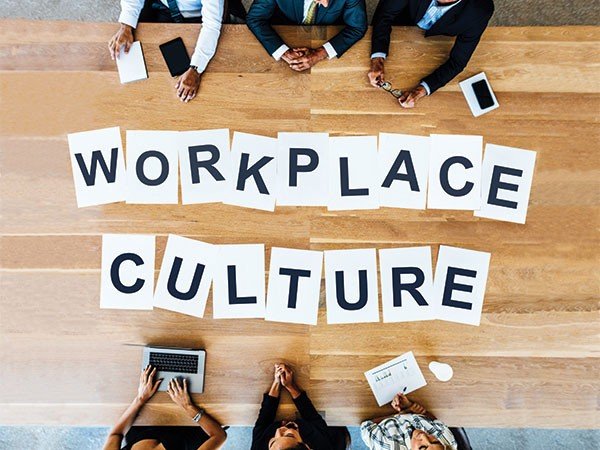Gen Z & "Conscious Unbossing": Redefining Leadership for the New Workforce
The corporate world is witnessing a seismic shift as Generation Z enters the workforce with unprecedented expectations and values that challenge traditional leadership models. At the forefront of this transformation is a phenomenon known as "conscious unbossing" – a deliberate movement where young professionals are stepping away from traditional hierarchical leadership roles in favor of more collaborative, autonomous, and purpose-driven work environments. This trend represents far more than generational preference; it signals a fundamental reimagining of what leadership means in the modern workplace.
Understanding Conscious Unbossing
Defining the Movement
Conscious unbossing refers to the growing movement of young professionals deliberately stepping away from traditional leadership or management roles. Unlike previous generations who viewed climbing the corporate ladder as the ultimate career goal, Gen Z is consciously choosing to avoid middle management positions to protect their well-being and maintain work-life balance. This shift represents a mindset change where individuals intentionally step away from traditional hierarchical leadership roles in favor of autonomy, collaboration, and meaningful work.
Research reveals the stark reality of this trend: 52% of Gen Z professionals are intentionally avoiding management positions, with 69% perceiving middle management as a role characterized by high-stress levels and minimal rewards. Even more telling, 16% of Gen Z workers are adamant that they will avoid middle management altogether.
The Philosophy Behind the Movement
At its core, conscious unbossing is about intentionally dismantling outdated hierarchical structures and replacing them with more empowering, collaborative, and human-centric ways of working. The concept recognizes that leadership should not be about control but about enabling others to lead and innovate. Gen Z doesn't want the "boss" title if it comes at the cost of well-being, freedom, or authenticity – they want influence without hierarchy, impact without burnout, and innovation without red tape.
This philosophy aligns with Gen Z's broader worldview. Their ambition is not measured in job titles or corner offices but in meaning. This generation craves purpose-driven work, asking "Why are we doing this?" before "How high should I jump?".
The Gen Z Workplace Revolution
Core Values Driving Change
Generation Z brings distinct values that are reshaping organizational culture fundamentally. Their approach to work is characterized by several key priorities that directly influence their rejection of traditional management structures.
Mental Health and Well-being Priority: A staggering 92% of recent college graduates say they want to be able to discuss mental wellness at work, and 61% of Gen Z workers would strongly consider leaving their current job if offered significantly better mental health benefits. This generation is 1.7 times more likely than previous generations to avoid management roles to protect their well-being.
Flexibility and Autonomy: Gen Z values flexibility above traditional career advancement, with 77% considering work-life balance central to a successful career. They prioritize flexible working hours, remote work options, and the ability to manage their own time.
Purpose Over Power: Unlike previous generations, Gen Z's ambition is measured in meaning rather than hierarchical position. A remarkable 86% of Gen Zers see purpose as pivotal to their overall well-being and job satisfaction, with 75% considering an employer's societal impact as a key factor in their decision-making process.
Leadership Style Preferences
Gen Z demonstrates clear preferences for collaborative and authentic leadership styles that break down traditional hierarchical structures. They respond best to leaders who demonstrate emotional intelligence and genuinely care about their well-being. Research indicates that the effective leadership style for Gen Z is servant leadership, characterized by qualities such as being friendly, humble, wise, supportive, understanding, and caring.
The generation favors flat hierarchical structures and believes in the power of collective intelligence, often seeking input from all team members regardless of their position. This approach fosters a sense of ownership and engagement among team members, leading to more innovative solutions and higher job satisfaction.
The Crisis of Traditional Middle Management
Systemic Problems with Current Structures
The rejection of middle management by Gen Z comes at a time when traditional hierarchical structures are already under severe strain. Middle managers are increasingly becoming casualties of organizational restructuring, with 32% of layoffs in 2023 being middle managers – a 12% increase from 2019. The hiring levels for middle managers have fallen 43% since 2022, while hiring for entry-level positions has only dropped 14%.
The challenges facing middle managers are multifaceted and severe. They juggle multiple roles as strategist, mediator, coach, and taskmaster while being responsible for ensuring senior leadership's goals are met and managing their teams' needs. Studies show that 28% of managers report frequent exhaustion at work compared to 17% of employees, and 75% of managers are overwhelmed according to Gartner research.
The Cost of Hierarchy
Research demonstrates that hierarchical structures consistently increase conflict-enabling states in teams. Status differences create resentment, power struggles emerge, and teamwork suffers, with more vertically structured teams being more likely to experience these harmful dynamics. Traditional leadership often focuses on solving immediate problems instead of proactively planning for long-term success, leading to a cycle of firefighting that leaves little room for strategic innovation or team growth.
The financial impact is equally concerning. Poor mental health costs the U.S. economy over $47 billion per year in lost productivity, while companies with highly engaged workforces have 21% higher profitability and 17% higher productivity than companies with disengaged employees.
Companies Embracing Unbossing
Success Stories and Case Studies
Several major corporations are leading the charge in implementing unbossing strategies, with notable success stories emerging from various industries.
Novartis has become a pioneer in the unbossing movement, building an entire culture around the concept. The pharmaceutical giant has implemented "servant leaders" who flip the traditional pyramid structure, developing leaders who support teams rather than control them. According to Glassdoor's employee sentiment analysis, Novartis' 2021 average of 63.1% positive reviews from current employees is better than both peer companies and large tech organizations. Their unbossed culture has evoked creative thinking and generated new and improved products, services, and processes.
Bayer has committed to flattening its organization and letting employees manage themselves by the end of 2024, cutting layers of management and restructuring with fewer bosses and fewer rules in favor of self-directed teams.
Meta has been a significant contributor to middle management reduction, with CEO Mark Zuckerberg stating he didn't want "managers managing managers, managing managers, managing managers, managing the people who are doing the work". The company's "year of efficiency" focused on removing multiple layers of management to create more direct connections between senior leadership and individual contributors.
Haier, the Chinese multinational, embraced unbossing through a strategy called 'rendanheyi,' where employees became micro-entrepreneurs responsible for their own unit's profit and loss. This approach aligns individual aspirations with company goals, fostering both innovation and employee engagement.
Implementation Benefits
Organizations implementing unbossing report several key benefits. Increased agility results from fewer layers of management, making decision-making processes faster and more responsive to market changes . Enhanced innovation occurs as employees at all levels are encouraged to contribute ideas, fostering a culture of creativity and continuous improvement. Direct communication between top leadership and front-line employees leads to better understanding of company goals and customer needs.
Cost savings represent another significant advantage, as reducing middle management positions can result in substantial financial benefits . Companies also report improved employee engagement, with workers feeling more valued and motivated when given control over their projects and decision-making processes.
The Future of Leadership
Emerging Leadership Models
The shift toward conscious unbossing is driving the development of new leadership models that emphasize collaboration, empowerment, and psychological safety. Collaborative leadership emphasizes shared decision-making, collective problem-solving, and inclusive teamwork to achieve common goals. This approach focuses on fostering collaboration, building relationships, and empowering team members to contribute their expertise, ideas, and perspectives.
Key principles of these emerging models include shared vision and goals, inclusive decision-making, empowerment and trust, and effective communication. Leaders facilitate open communication, build trust, and create supportive environments where individuals feel valued, heard, and motivated to work together toward shared objectives.
Technology's Role in Transformation
The integration of AI and automation is accelerating the unbossing trend, with Gartner predicting that by 2026, 20% of organizations will use AI to flatten their structures, eliminating more than half of today's middle management roles. Many core functions traditionally performed by managers, such as synthesizing reports, overseeing tasks, and translating strategy, are increasingly automated.
This technological shift is creating opportunities for more strategic leadership roles while eliminating routine management tasks. Organizations are using AI-powered tools to bridge communication gaps in diverse workforces and enhance collaboration across cultural and generational lines.
Workplace Trends Supporting Change
Several workplace trends are converging to support the unbossing movement. The continued rise of remote and hybrid work models provides employees with flexibility that aligns with Gen Z preferences. An increased focus on employee well-being and mental health is becoming a business imperative, with 96% of US employees needing flexibility but only 47% having it.
The emphasis on diversity, equity, and inclusion as core business values resonates strongly with Gen Z's expectations. Additionally, the role of sustainability and social responsibility in the workplace has become increasingly important, with Gen Z looking for culture first rather than as a nice-to-have add-on.
Challenges and Considerations
Potential Drawbacks
While conscious unbossing offers significant benefits, it also presents challenges that organizations must carefully navigate. Not every employee thrives in a decentralized environment, with some feeling lost or unsure of how to navigate newfound freedom. The elimination of too many leadership roles can lead to disorganization and employee frustration if not properly managed.
Women employees face particular challenges, as they hold a smaller percentage of senior and middle management roles, and further reductions in these positions could hinder their career advancement. The recent wave of layoffs in the tech sector has already disproportionately affected women in leadership positions.
Implementation Requirements
Successful unbossing requires careful planning and strategic implementation. Organizations must build psychological safety as a foundation, creating environments where employees feel comfortable sharing ideas and concerns without fear of judgment. This involves developing supportive management structures that coach rather than control, and establishing clear communication channels between all organizational levels.
Companies must also invest in employee development and training to ensure workers can handle increased autonomy and responsibility. The transition requires breaking down rigid hierarchies while maintaining necessary oversight and accountability structures.
Strategic Recommendations for Organizations
Building an Unbossed Culture
Organizations seeking to implement conscious unbossing should start by assessing their current hierarchical structures and identifying opportunities for flattening. This involves developing servant leaders who focus on supporting and empowering teams rather than controlling them. Leaders should prioritize trust, openness, and shared goals while creating environments where everyone's contributions are valued.
Establishing psychological safety is crucial, requiring leaders to demonstrate commitment to employee well-being and create supportive environments for risk-taking and innovation. Organizations should implement robust feedback mechanisms and eliminate traditional performance ratings in favor of impact measurement.
Preparing for Gen Z Leadership
As Gen Z moves into leadership positions, organizations must adapt their development programs to align with this generation's values and expectations. This includes offering purpose-driven work opportunities, flexible arrangements, and strong mental health support. Companies should focus on developing collaborative leadership skills and emotional intelligence rather than traditional command-and-control approaches.
Investment in technology and digital tools is essential, as Gen Z leaders leverage technology effortlessly in their leadership approach. Organizations should also prioritize diversity and inclusion initiatives, as Gen Z leaders champion these values and build teams reflecting diverse backgrounds and perspectives.
Conclusion
The conscious unbossing movement represents a fundamental shift in how leadership is perceived and practiced in the modern workplace. As Gen Z continues to enter the workforce in greater numbers, their rejection of traditional hierarchical structures is forcing organizations to reconsider long-held assumptions about management and leadership effectiveness.
The data clearly demonstrates that this is not merely a generational preference but a response to systemic problems within traditional management structures. Companies that embrace unbossing principles – prioritizing employee well-being, fostering collaboration, and creating psychologically safe environments – are seeing improved engagement, innovation, and financial performance.
However, successful implementation requires careful planning, strategic thinking, and a commitment to cultural transformation. Organizations must balance the benefits of flatter structures with the need for appropriate oversight and support systems. The future belongs to companies that can adapt their leadership models to meet the evolving expectations of a workforce that values purpose, autonomy, and authentic leadership over traditional power structures.
As we move forward, the conscious unbossing movement will likely accelerate, driven by technological advances, changing workforce demographics, and the proven benefits of more collaborative, human-centric approaches to leadership. Organizations that embrace this transformation now will be better positioned to attract, retain, and leverage the talents of the next generation of workers who are redefining what it means to lead in the modern workplace.
Sources:
Deloitte. (2024). 2024 Gen Z and millennial survey: Living and working with purpose. https://www2.deloitte.com/content/dam/Deloitte/ec/Documents/about-deloitte/deloitte-2024-genz-millennial-survey.pdf
Engagement Multiplier. (2020). The ROI of employee engagement. https://www.engagementmultiplier.com/wp-content/uploads/2020/10/Engagement-ROI-US-Version.pdf
Hendrix, K. (2020). Design of social hierarchy in teams as a predictor of team innovation: Moderating role of team power legitimacy [Master's thesis]. Tilburg University. http://arno.uvt.nl/show.cgi?fid=152096
Bisset, L. (2024, September 28). Conscious unbossing: Why Gen Z is steering clear of middle management. Forbes. https://www.forbes.com/sites/danpontefract/2024/09/28/conscious-unbossing-why-gen-z-is-steering-clear-of-middle-management/
Business Insider. (2025, May 10). Gen Z is 'consciously unbossing' to preserve their mental health. https://www.businessinsider.com/gen-z-consciously-unbossing-avoid-management-roles-preserve-mental-health-2025-4
Cake.com. (2025, January 8). The Gen Z effect and the workforce evolution: 2024 statistics. https://cake.com/empowered-team/gen-z-workforce-statistics/
CBS6 Albany. (2022, November 21). Survey finds poor mental health 'a real issue in the American workforce'. https://cbs6albany.com/news/nation-world/mental-health-employees-poor-study-finds-managers-company-culture-depression-anxiety-american-workforce-employment-issue
CTO Magazine. (2025, May 5). Avoiding leadership roles: Why Gen Z is steering clear of the C-suite. https://ctomagazine.com/gen-z-avoiding-leadership-roles/
DDI. (2025, March 4). Conscious unbossing. https://www.ddiworld.com/blog/conscious-unbossing
Economic Times. (2021, December 9). How this company is 'unbossing' the boss culture and reaping benefits. https://hr.economictimes.indiatimes.com/news/trends/employee-experience/how-this-company-is-unbossing-the-boss-culture-and-reaping-benefits/88185130
Economic Times. (2023, January 30). Mark Zuckerberg now puts Meta's middle managers on notice. https://economictimes.indiatimes.com/tech/technology/mark-zuckerberg-now-puts-metas-middle-managers-on-notice/articleshow/97434034.cms
Economic Times. (2024, October 24). By 2026, 20% of organisations will use AI to reduce 50% middle management roles: Gartner. https://economictimes.indiatimes.com/jobs/hr-policies-trends/by-2026-20-of-organisations-will-use-ai-to-reduce-50-middle-management-roles-gartner/articleshow/114535239.cms
Forbes. (2023, February 6). If companies follow the lead of Elon Musk and Mark Zuckerberg, middle managers are the next layoff victims. https://www.forbes.com/sites/jackkelly/2023/02/06/if-companies-follow-the-lead-of-elon-musk-and-mark-zuckerberg-middle-managers-are-the-next-layoff-victims/
Forbes. (2024, December 11). How conscious unbossing is reshaping leadership and career growth. https://www.forbes.com/sites/dianehamilton/2024/12/11/conscious-unbossing-how-is-it-reshaping-leadership-and-career-growth/
Forbes. (2025, April 2). The evolution of work: How Gen Z is reshaping leadership and workplace culture. https://www.forbes.com/sites/forbeseq/2025/04/02/the-evolution-of-work-how-gen-z-is-reshaping-leadership-and-workplace-culture/
Fortune. (2025, May 9). Mark Zuckerberg runs Meta by only managing a 'small group' of 30. https://fortune.com/2025/05/09/mark-zuckerberg-meta-managing-small-group-no-one-to-ones/
Gartner. (2024, October 22). Gartner unveils top predictions for IT organizations and users in 2025 and beyond [Press release]. https://www.gartner.com/en/newsroom/press-releases/2024-10-22-gartner-unveils-top-predictions-for-it-organizations-and-users-in-2025-and-beyond
Handelsblatt. (n.d.). Bayer-Chef Bill Anderson im Interview: „Es hilft nur der radikale Wandel". https://www.handelsblatt.com/unternehmen/industrie/bayer-chef-bill-anderson-interview-umbau-fuehrung/100044342.html
Harvard Business Review. (2025, April 29). What's the future of middle management? https://hbr.org/2025/04/whats-the-future-of-middle-management
HCA Magazine. (2023, June 26). 'Completely unmanageable': Helping managers deal with impossible workloads. https://www.hcamag.com/nz/specialisation/leadership/completely-unmanageable-helping-managers-deal-with-impossible-workloads/450546
HRnet Rimbun. (2025, April 25). What is servant leadership and why is it relevant for Generation Z? https://hrnetrimbun.com/insight/what-is-servant-leadership-and-why-is-it-relevant-for-generation-z/
LinkedIn. (2024, October 1). Gen Z and conscious unbossing: Redefining leadership for the future. https://www.linkedin.com/pulse/gen-z-conscious-unbossing-redefining-leadership-future-aval-sethi-rwyoc
LinkedIn. (2025, May 22). Why Gen Z don't want your management job — And what that means for your business. https://www.linkedin.com/pulse/why-gen-z-dont-want-your-management-job-what-means-rcbyc
Management Issues. (2024, September 23). Gen-Z gives middle management the thumbs-down. https://www.management-issues.com/news/7638/gen-z-gives-middle-management-the-thumbs-down/
Mental Health America. (2025, January 5). MHA releases 2024 mind the workplace report, GenZ and millennials report the poorest work health scores. https://mhanational.org/news/mha-releases-2024-mind-the-workplace-report-genz-and-millennials-report-the-poorerest-work-health-scores/
People Matters Global. (2024, October 15). From layoff to burnout: Why it's the worst time to be a middle manager. https://anz.peoplemattersglobal.com/article/culture/from-layoff-to-burnout-why-its-the-worst-time-to-be-a-middle-manager-43028
Prodoscore. (2025, April 3). Is servant leadership right for Gen Z? https://www.prodoscore.com/blog/servant-leadership-is-this-the-management-style-gen-z-responds-to-best/
Reed. (2025, May 7). Leadership shift: the rise of conscious unbossing. https://www.reed.com/articles/leadership-shift-the-rise-of-conscious-unbossing
SHRM. (2024, November 27). Transforming work: Gartner's AI predictions through 2029. https://www.shrm.org/topics-tools/flagships/ai-hi/gartner-ai-predictions-through-2029
SHRM. (2025, May 14). The truth about Gen Z's mental health expectations at work. https://www.shrm.org/enterprise-solutions/insights/truth-about-gen-zs-mental-health-expectations-at-work
Small Business Charter. (2024, December 5). Gartner finds that managers are overwhelmed by their responsibilities. https://smallbusinesscharter.org/news-and-case-studies-help-to-grow/gartner-finds-that-managers-are-overwhelmed-by-their-responsibilities
The Print. (2024, October 24). By 2026, 20% of organizations will use AI to reduce 50% middle management roles: Gartner. https://theprint.in/economy/by-2026-20-of-organizations-will-use-ai-to-reduce-50-middle-management-roles-gartner/2326221/
The Week. (2025, May 19). 'Conscious unbossing': Gen Z's aversion to management roles. https://theweek.com/culture-life/conscious-unbossing-gen-z-middle-management
Yahoo Finance. (2023, January 28). Mark Zuckerberg reportedly said he doesn't like seeing 'managers managing managers'. https://finance.yahoo.com/news/mark-zuckerberg-reportedly-said-doesnt-000124201.html
5-Gens. (2024, December 2). Purpose drives Gen Z and millennials at work. https://www.5-gens.com/post/purpose-drives-gen-z-and-millennials-at-work
ACCP. (2024, December 3). In spite of everything, Gen Z is still driven by purpose. https://accp.org/resources/csr-resources/accp-insights-blog/in-spite-of-everything-gen-z-is-still-driven-by-purpose/
AOL. (2025, May 9). Companies are culling managers. Mark Zuckerberg explained his philosophy on this years ago. https://www.aol.com/companies-culling-managers-mark-zuckerberg-181533963.html
Arthan Careers. (2024, December 4). Are Gen Z and millennials reshaping the future of work? https://blog.arthancareers.com/are-gen-z-and-millennials-reshaping-the-future-of-work/
Business Insider. (2024, March 16). Middle managers accounted for almost a third of layoffs last year. https://www.businessinsider.com/middle-managers-layoffs-2023-meta-tech-companies-jobs-employment-2024-3
Corporate Rebels. (2025, May 2). 10 questions about Haier's RenDanHeYi model—answered. https://www.corporate-rebels.com/blog/10-questions-about-haiers-rendanheyi-model-answered
Industry Intel. (2024, October 24). Gartner expects 20% companies to use AI to flatten organizational structure by 2026. https://www.industryintel.com/news/gartner-expects-20-companies-to-use-ai-to-flatten-organizational-structure-by-2026-eliminating-50-current-middle-management-positions-challenges-include-job-security-concerns-among-wider-workforce-employee-distrust-lack-of-development-opportunities-NDAxNjI0LDEyNiwxNjYwMzM2OTQ1NDQ
Visionary Marketing. (2024, May 6). Rendanheyi, the Haier management model. https://visionarymarketing.com/en/2024/05/06/haier-rendanheyi/
Woke Waves. (2024, April 10). Gen Z at work: A deep dive into their pursuit of balance, satisfaction, and well-being. https://www.wokewaves.com/posts/gen-zs-work-life-balance-and-job-satisfaction
YScouts. (2025, March 4). Servant leadership: 10 characteristics of a servant leader. https://yscouts.com/10-servant-leadership-characteristics/












